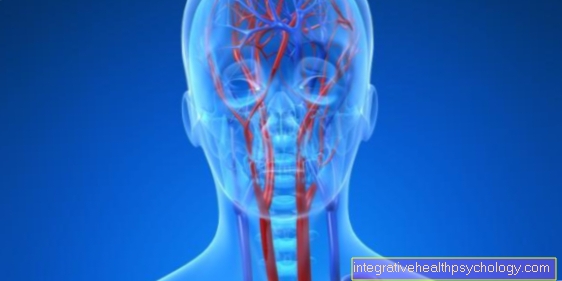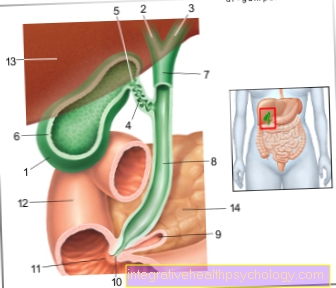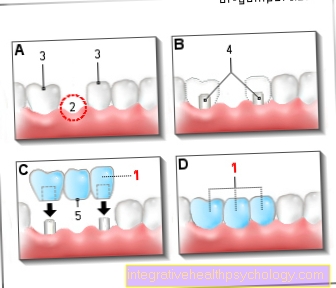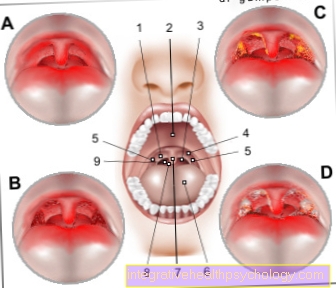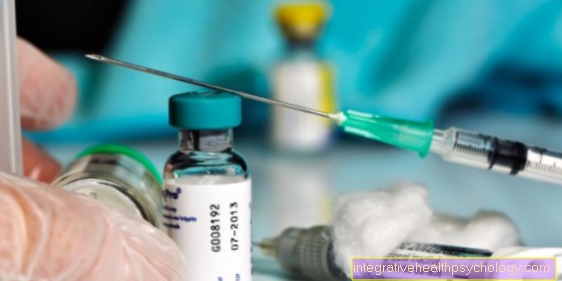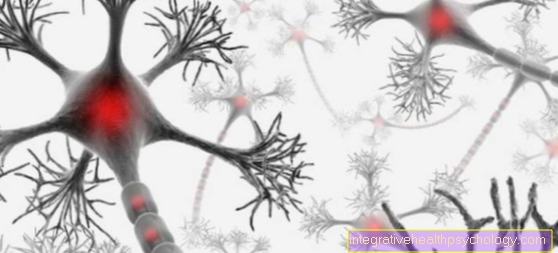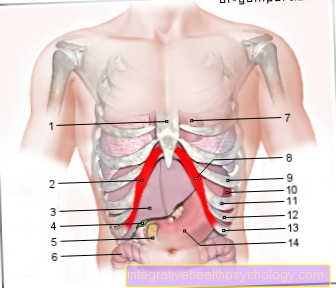Superantigens
What are superantigens?
A superantigen belongs to the group of antigens. These antigens are structures made from carbohydrates, fats, proteins or combinations thereof that can be produced by bacteria or viruses. On the basis of the antigens, the immune system of the human body can initiate an immune response by binding the antigen to an antibody. In contrast to normal antigens, the superantigens do not depend on an intermediate stage of the immune response. so that superantigens can immediately trigger a very strong, unspecific and excessive immune response, such as toxic shock syndrome (TSS).

What does a superantigen do?
The effect of a superantigen can partly be compared with the effect of normal antigens. In both cases, the immune system is activated, which responds to it with an immune reaction. While normal antigens cause a controlled immune reaction, which usually results in adequate control of the pathogen, a superantigen leads to massive activation of immune cells, which via mediators can lead to circulatory failure.
The massive effect of the superantigens is due to the fact that, compared to normal antigens, they are not absorbed by so-called antigen-presenting cells and split up into small fragments. Rather, they have a very high affinity for several receptors on the surface of immune cells such as T lymphocytes, which bypasses a regulatory step of the immune system.
A superantigen can also bind several receptors at once, which further enhances its effect. This activates up to twenty times the number of immune cells compared to normal immune responses.
As with every process in the body, however, an increased reaction of the immune cells with the strong output of mediators or cytokines such as interleukins can cause damage. In addition to acting as a superantigen, it can also trigger an adequate immune response as a normal antigen.
Structure of a superantigen
Superantigens belong to the group of globular proteins. This means that they have several domains which, when the protein is produced, always fold in the same way and take on specific tasks. In the case of superantigens, there are four domains with different functions such as binding of receptors and regulation of the activity of a receptor. On the one hand, a receptor can be bound on the antigen-presenting cells. On the other hand, the so-called T-cell receptor is bound to T-lymphocytes. After the two cells bind, the superantigen releases the inflammatory mediators.
How does a superantigen activate the immune system?
A superantigen can activate the T lymphocytes after binding to the T cell receptor. In addition, after binding two different cells, superantigens can activate the immune cells. Each superantigen domain has a role to play. Like most globular proteins, the superantigens also have binding domains that are used to bind a structure on the surface of cells. They also have what are known as regulatory domains, which can change the affinity and activity of the protein or the target cell for a domain. Overall, an interaction of all domains of the superantigens leads to an activation of the immune cells.
Consequences of activation
After the immune cells, especially the T lymphocytes, have been activated by binding the T cell receptor by the superantigen, an excessive immune reaction occurs. Compared to a normal immune response, it can be increased by up to twenty times the highest normal immune response. Activation of up to 20% of the T lymphocytes takes place. Overall, this leads to a massive release of so-called cytokines, which act systemically, i.e. in the entire organism. These cytokines also have a variety of mechanisms of action, which is why the affected person can experience relatively complicated symptoms. Most of the time, however, this leads to a failure of the circuit. There is also a connection between superantigens and diseases such as
- Diabetes mellitus,
- Rheumatoid arthritis,
- Multiple sclerosis and
- endocarditis discussed.
Examples of a superantigen
The superantigens are usually of bacterial or viral origin. The best known is probably the superantigen of the bacterium Staphylococcus aureus. This antigen is called Toxic Shock Syndrome Toxin (TSST-1) and is responsible for Toxic Shock Syndrome (TSS). This bacterium can also produce a so-called exofoliative toxin, which is also considered a superantigen.
The TSST-1 can also be produced by the bacterium Streptococcus pyogenes. The scarlet fever toxins Spe-A, Spe-B and Spe-C are also produced by this bacterium and are considered superantigens. Gram-negative bacteria can produce the superantigens MAM and YPM. Other superantigens are SPEH, SPEJ or SMEZ.
Toxic shock syndrome (TSS)
The Toxic Shock Syndrome or Toxic Shock Syndrome (TSS) is a very acute syndrome caused by the Toxic Shock Syndrome Toxin (TSST-1). Approx. 1% of the bacteria of the Staphylococcus aureus strain are able to produce this TSST-1. It often occurs in young women who use tampons for too long during their menstruation. Like the other superantigens, TSST-1 also stimulates immune cells to produce and secrete cytokines. In the course of the TSS it comes to
- Fever,
- Chills,
- Muscle aches,
- Nausea and vomiting,
- temporary loss of consciousness or also
- Redness of the skin,
- Peeling of the skin,
- Failure of the circulatory system, kidney or liver.
The TSS should definitely be treated by a doctor in a hospital!
How is a superantigen different from an antigen?
A superantigen differs from an antigen in its structure and its effect.
Antigens also consist of carbohydrates, fats, proteins or combinations thereof, but they are smaller in size than superantigens. Even after binding to a receptor of special immune cells, it is made smaller again so that they can be presented by the antigen-presenting cells.
A far less fulminant effect is to be expected in the action of the antigens.
That's how dangerous superantigens are
The danger posed by superantigens differs depending on the species.It is assumed that some superantigens can cause diseases such as rheumatoid arthritis, but these are not life-threatening. Even so, some superantigens can be linked to potentially fatal diseases. The TSST-1 deserves particular mention here, which often has strong effects. Superantigens that cause endocarditis or long-term sequelae in the kidney are also potentially life-threatening.

